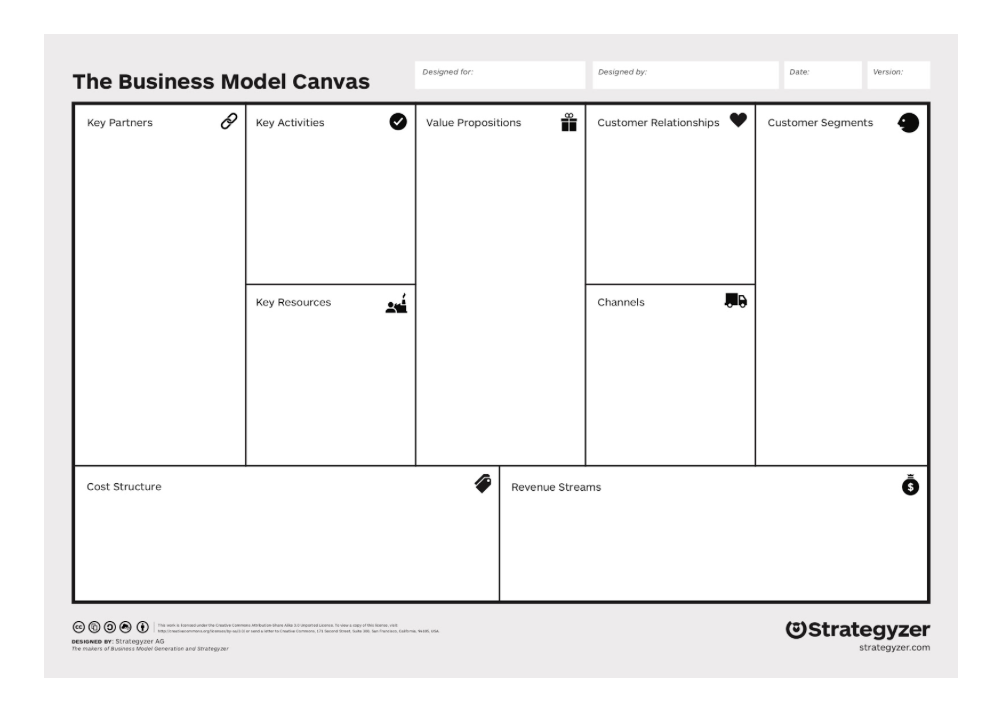When to use Value Proposition Canvas
If you have ever googled "business model", "value proposition" or similar terms, you will have come across Strategyzer. Strategyzer is a strategy and...
3 min read
Por Fernando Solano | Jul 23, 2019
In 2008, Alex Osterwalder developed a tool to facilitate the analysis, mapping, and visualization of a company's business models. The “Business Model Canvas” is a summary (about the size of a page) of the strategic details that a company needs to generate, deliver, and capture value. The tool is divided into nine blocks that allow you to keep the focus on the most important strategic elements of your business.
Benefits of the Business Model Canvas
There are various benefits of the business model canvas. Among them are:
Guide to fill the Business Model Canvas
The Business Model Canvas contains 9 categories that answer important questions about your business. The correct way is to divide the Canvas into two large units of analysis: the right or market part, and the left part (internal company analysis)
Step 1: Previous activities
Print a Canvas format on a plotter size 841 x 1189 mm and paste it on a wall. Buy bookmarks and post-its. Because it is an intellectual property tool of Strategyzer (Alex Osterwalder company) you should always print the formats of the Business Model Canvas with the legend.

Step 2: Complete the Business Model Canvas
It is the means by which you reach your customer segments. The channels can be your own or from third parties. In the case of third parties, analyze them as a segment and see what value they obtain from your product/service. In the channels consider the following moments:
After analyzing the key activities, key resources, and key partnerships, reflect on the costs your company has.


If you have ever googled "business model", "value proposition" or similar terms, you will have come across Strategyzer. Strategyzer is a strategy and...

What is Value Proposition Canvas? To explain what Value Proposition Canvas (VPC) is, I think it is important to first mention what Business Model...

This blog will explain what a BMC is and a step-by-step explanation of how to define a business model with this famous canvas. To learn more about...